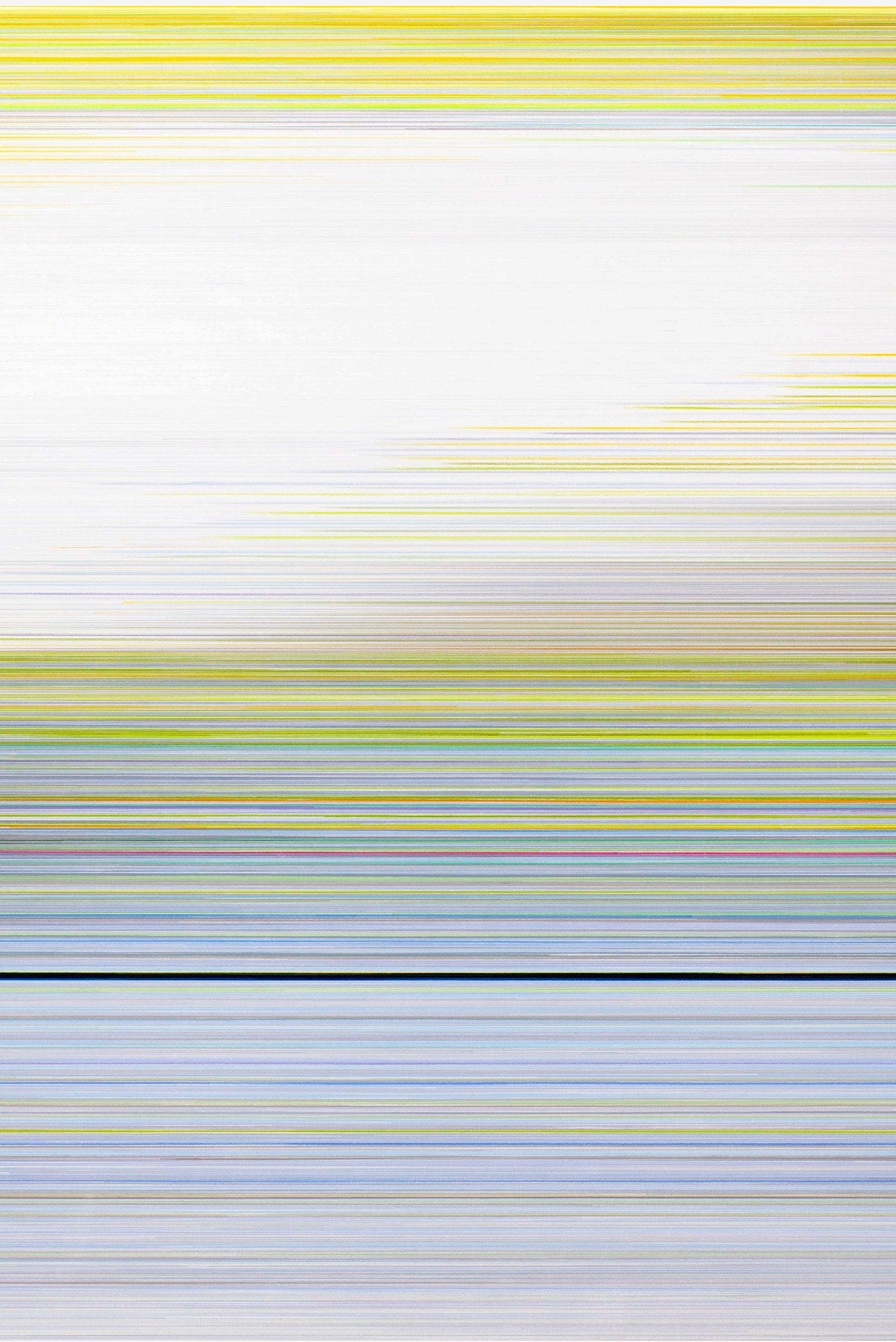ANNE LINDBERG what color is divine light?

Across many religions, light is used as symbol of divine presence on Earth and can be tied to ancient spiritual practices stemming from sun worship. In 1971, art historian Patrik Reuterswärd wrote What Color Is Divine Light?, exploring how artists have attempted to represent light and divinity in their work. “Divine Light, if describable at all,” he stated, “should be something similar to, yet far more brilliant and resplendent than, physical light.” Depicting this type of light is impossible, and artists have turned to color to illustrate the divine instead.
Inspired by Reuterswärd’s essay, Anne Lindberg created what color is divine light? as both her response to an unanswerable question and an echoing prompt to the audience. For Lindberg, divinity exists within intangible moments and beyond the visible spectrum of light. Between complementary hues exist optically invisible colors known as “impossible colors.” Not readily perceivable to the brain or eye, when viewable at all they appear fleetingly as white. Set against lavender walls, what color is divine light? contains thousands of complementary yellow and blue threads optically vibrating together, forming a cloud of color that aspires to become like light itself. “It’s the unnamed space between,” states Lindberg. “Although our eyes can’t perceive the colors, we feel them, sense them. The divine, likewise, is unnamable, untouchable, intangible.” Lindberg’s installation invites visitors to gather in the gallery and reflect: If divinity could be experienced as a physical presence, what might it look like? Sound like? Feel like? What color is divine light?
Anne Lindberg (American, b. 1962) is a multimedia artist whose work centers on immersive installations and drawings that tap a non-verbal physiological landscape of body and space, provoking emotional, visceral and perceptual responses. Conceptually, her works explore questions of time, causality and sequence as they speak to the vicissitudes of human experience. Lindberg’s work has been exhibited widely and is held in the collections of the Arkansas Museum of Fine Art; the U.S. Consulate General in Dhahran, Saudi Arabia; Nevada Museum of Art; Detroit Institute of Art; the Rachofsky Collection; the Nerman Museum of Contemporary Art; NYSE Chicago; NYU Langone Health; Akron Art Museum; Everson Museum of Art and the Kemper Museum of Contemporary Art, among many others. She is the recipient of a 2011 Painters & Sculptors Joan Mitchell Foundation Grant, a Charlotte Street Foundation Fellowship, two ArtsKC Fund Inspiration grants, a Lighton International Artists Exchange grant, the Art Omi International Artists Residency, an American Institute of Architects Allied Arts and Crafts award, and a Mid-America National Endowment for the Arts Fellowship. Lindberg received a B.F.A. from Miami University (1985), and a M.F.A. from Cranbrook Academy of Art (1988). She lives and works in Ancramdale, New York.
Supporters of the Exhibition and Related Programming
The Contemporary Textiles Endowment
The Estate of Jack Lenor Larson
The Fund for Contemporary Textile Art
Connection and Community in Secular Space
In the changing landscape of contemporary American sacred spaces, secular institutions have become places where people seek the comforts that formerly only religious institutions provided. Museums, in particular, have served as spaces of connection and transcendence, especially during difficult times. Museums can remind us that, in the face of turmoil, the best of humanity — art, culture, community, spirituality — find a way to persevere and flourish. The Sacred Design Lab puts it eloquently: Museums “ground us in our better nature, which compels us to lives of love, justice and risking the impossible.” With these ideas in mind, Lindberg created what color is divine light? as a site of active contemplation and community building.
Citation Patrik Reuterswärd, “What Color Is Divine Light?,” in Light in Art: From Aten to Laser: Essays on Concepts of Light as Idea and Medium, ed. Thomas B. Hess and John Ashbery (Collier Books, 1971), 109.
Gallery Activations
what color is divine light? reaches conceptual fulfillment when people gather in the gallery, singularly or in community, to foster deeper connections. Throughout the course of the exhibition, groups and individuals have been invited to activate the space by holding programs, events, and gatherings. Some of these partners include the InterFaith Council of Metropolitan Washington, Reed Society for the Sacred Arts, GW’s Art Therapy Program, and GW’s Muslim Students’ Association, among others.


